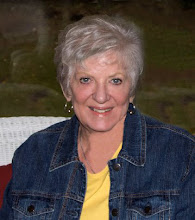I have been questioned about the advantage of shooting in the RAW format. I am learning so I relied on CmishVicki to help answer our questions. Thank you Vicki for you help :).
Check out Vicki's photos at: Visions
Why Shoot Raw?
First of all, I've heard from many, many photographers that JPEGs are fine for all that they do. While this may be correct in some cases, I've always been an overachiever and want the highest potential quality and flexibility possible in my photos. I do make adjustments in photoshop so having as much information as possible available to me can only be a good thing.
What's the difference? JPEG files are smaller because they're compressed. Your camera does the processing and throws away information and pixels in order to create the image. You can capture and store more files on your cards and in your computer. You can usually shoot faster when you're shooting JPEGs because of the file size, too. When quality isn't the most important concern, JPEG files are fine and can be a good solution. Another benefit of JPEGs is that they don't NEED to be processed and converted before sharing with others. RAW files, on the other hand, are larger because a RAW file records all of the data captured by your camera's sensor--the most information available. Your camera isn't processing the images--you don't have to trust that your camera is making the best decisions possible for your image. Most RAW files are captured in 16-bit or higher, giving you more tonal values for each color channel. JPEGs are captured in 8-bit per channel, giving you much less tonal value.
Ok...that's the technical part. Now for the practical. Once you shoot an image in JPEG format, you're pretty much done. You can make adjustments in Photoshop or other editing software, but every time you open and resave that image, you're losing more pixels (and quality). Saving it as a TIF file or PSD file can prevent further compression and deterioration, but it's already been compressed by virtue of being a JPEG in the first place. In RAW format, you process the file in a Camera Raw software (sort of like developing a negative) and the original file isn't affected. Essentially, RAW files aren't images, they're a collection of data that you turn into an image when you process them. One of my favorite reasons for shooting RAW is that you can correct any problems created by an incorrect white balance. When you're moving from indoors to outdoors, it's easy to forget to change your settings...when you shoot in RAW format, this isn't an issue because it can be corrected in the software. You can also adjust exposure, saturation and other settings.
The bottom line for me is that I want the best possible image. I don't believe I get that when I shoot JPEGs. "Good enough" isn't good enough. :)
Friday, March 02, 2007
Subscribe to:
Post Comments (Atom)


3 comments:
Thanks...I never did understand the whole RAW thing.
nancy
A good explanation. I think the RAW format is most useful when you are making prints. When you share files online they are set to JPG or something of the ilk and many of the advantages of RAW are lost.
Sounds about right. Since I get no advantage out of the ability to enhance the post processing experience, I don't need the extra step of conversion. I am fortunate that my camera will shoot in TIFF which as you state is lossless. It really cuts down on the time from camera to print by using the TIFF.
Greg
Post a Comment